Cities are often synonymous with traffic jams, noise, pollution and hours lost in commuting. Is there another way for people to live together in a large community?
In 1965, Mirra Alfassa – known as The Mother – was outlining the first features of a city of the future in South India. In those early notes on Auroville she envisioned transport using small electric vehicles, traveling at approximately 15 kms/h. In December of that same year she replied to a questioner that there should be no cars within the city. Such a design may seem impractical, but many car-free cities and districts already exist around the world: Venice, Ghent and parts of Morocco’s Fes, to name a few.
Half a century later, with a looming climate crisis, cars are still a marker of the middle class and their numbers rise exponentially. Can the City that the World Needs show a different path forward? We met with Debo from Kinisi, who works on sustainable mobility for Auroville, and who believes that Auroville can indeed become car-free.
“I wanted to see how we can give an electric cycle option to Aurovilians”, says Debo, who first built an electric motorbike in 2015, and two years later launched Kinisi, which means ‘motion’ in Greek.
A 2017 survey found between 40-50 electric vehicles in Auroville – mostly lead-battery-powered mopeds made by an Auroville unit called EV Future, which had closed by then. EV Future’s founders, Akash and Sukrit, met with Debo and shared their experience, helping him to define Kinisi’s operating model.
Within five years, Kinisi provided Auroville residents with over 650 electric vehicles, 498 of which are Kinisi electric bicycles, or e-cycles for short. Kinisi researches Auroville’s transport needs and suggests solutions, as well as servicing and repairing any electrical vehicles in Auroville.
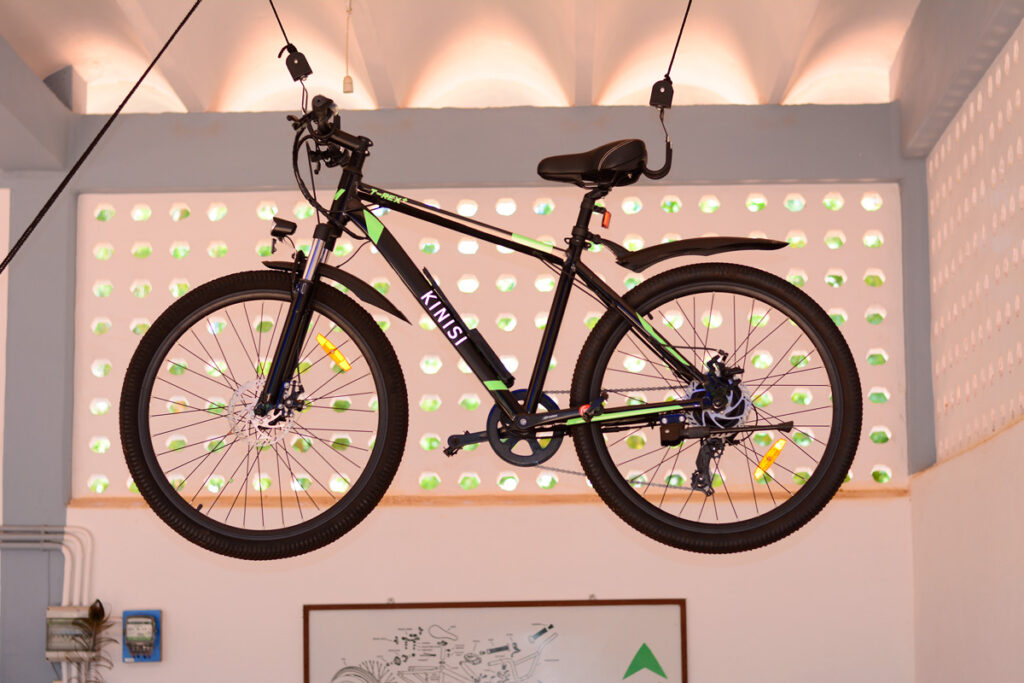
Sustainable Mobility
With Auroville’s low population density, where residents are scattered over a large area, it isn’t financially viable for Kinisi to start a public transport service. Instead, they chose to work with e-cycles, which provide autonomy, are quiet and emissionless. A major advantage over heavier e-scooters and e-motorbikes is being able to pedal back home if the battery runs out.
When considering the battery, Kinisi chose to go with the newer and more efficient Lithium-ion battery rather than the cheaper, old generation lead-acid battery. A key decision was making the battery removable, as an alternative to installing many charging stations all around Auroville. Once detached from the e-cycle, the battery can be charged at any indoor outlet just like a phone or laptop, before powering the bike for up to 30 km in a single charge.
Auroville has an abundance of solar panels, connected to a single high-tension grid within the central city. During sunlight hours, these produce more energy than the city is using, and that excess energy can be used to charge electric vehicle batteries during the daytime, for a truly sustainable and environmentally friendly transport solution.
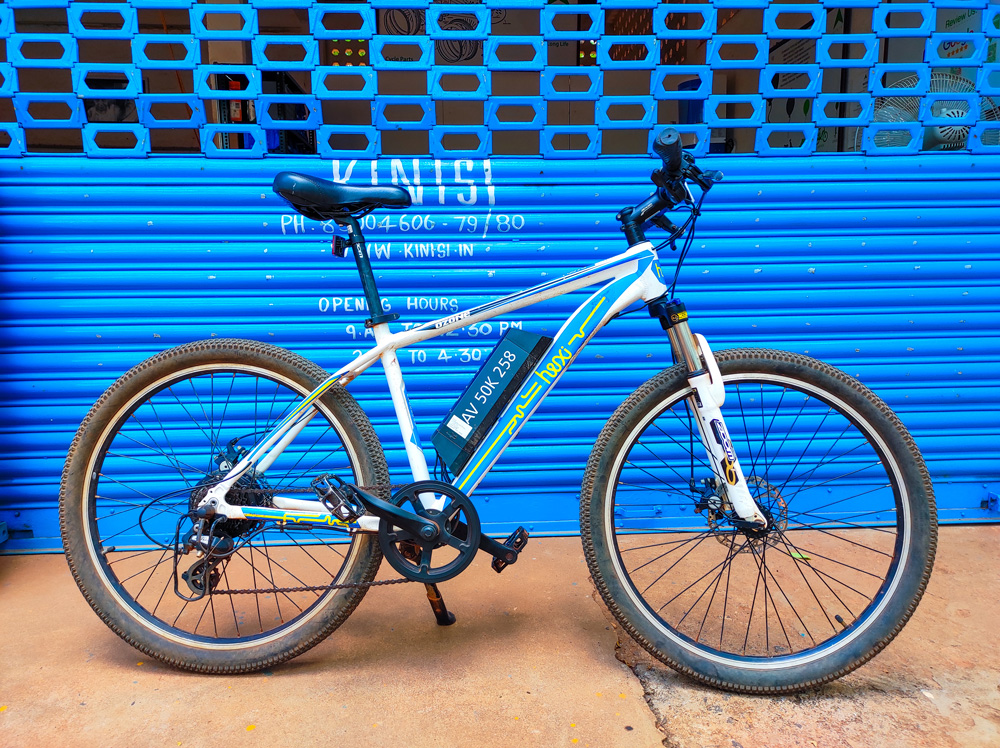
A New Economy
Kinisi is happy to be part of creating something new. “We always encourage people not to own things”, Debo says. “Owning things means going back to the old economy. Electric vehicles are an opportunity to move into a new sharing model of non-ownership in transport.”
Bike sharing programs already exist in many large cities around the world, and in some Indian cities such as Bangalore, Delhi and Chandigarh. Auroville has a different sharing model called Kinisi In-kind Mobility, or KIM for short: a model where instead of owning a bike, Auroville residents receive an e-cycle for stewardship under a single monthly fee.
Every month, 5-10 new e-cycles are given out under this scheme, and Kinisi covers all repairs and maintenance. But prevention is better than repair, and the user must bring their vehicle in for maintenance once a month. There are currently 320 active members in the KIM scheme, and 60 more are on the waiting list to receive a bike.

“When you calculate its total life cycle, from the manufacturing to the end of its life, the e-cycle is a winner,” says Debo. “It has the lowest environmental impact compared to any motorcycle, or even electric motorcycles. I think e-cycles, bicycles and walking are the best modes of transport.”
A few other e-vehicle types are available besides the basic e-cycle, such as the cargo e-cycle and the family cargo, which can carry children. Later this year, Debo hopes to start a pool of collective e-scooters for Aurovilians, which would be more suited for the roads outside Auroville and for going long distances.
Kinisi is also researching battery recycling, and working on setting up e-scooter battery swapping stations all around Auroville, where low batteries can be exchanged on the spot for charged ones.
Within a few years, Debo predicts, it may become economical for Kinisi to invest in public transport. Residents would bring their e-cycles to central parking points, and take a different mode of transport, such as an electric bus, taxi or minivan, for the rest of their journey.
To explore Kinisi vehicles and rates, you can check out their website, or visit their office if you are in Auroville.
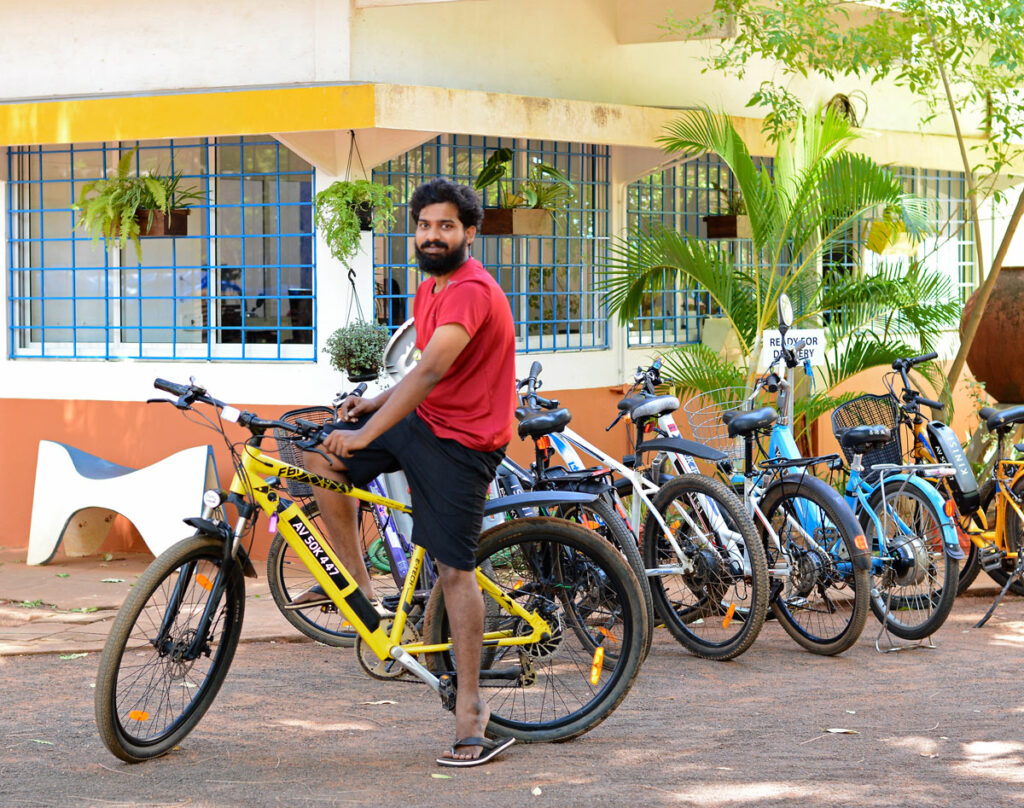

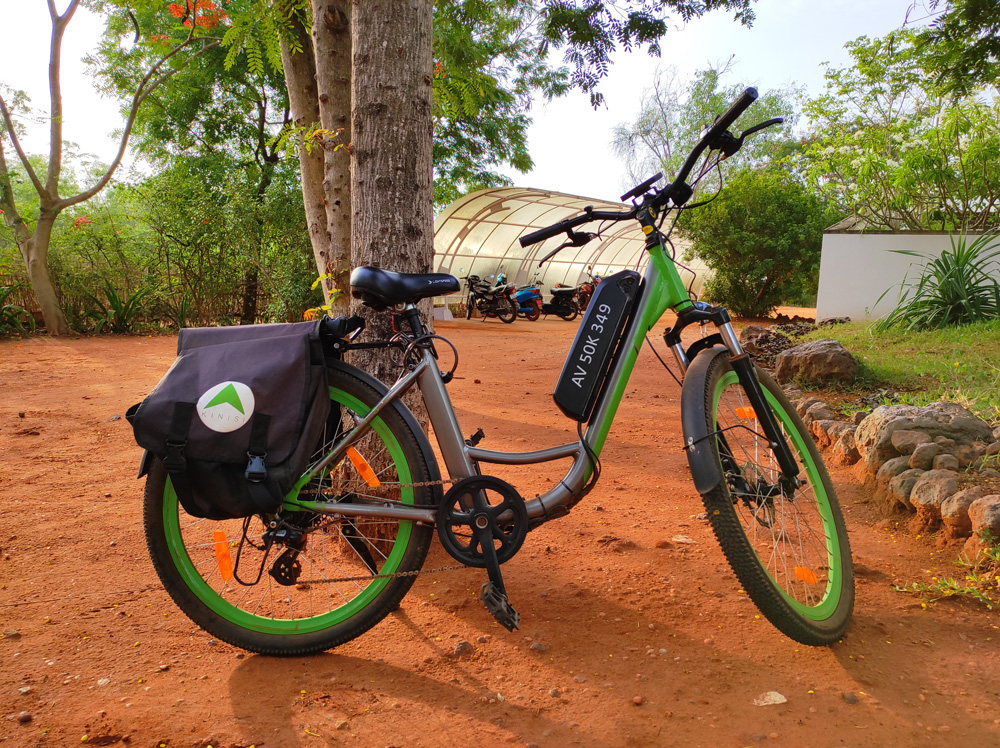
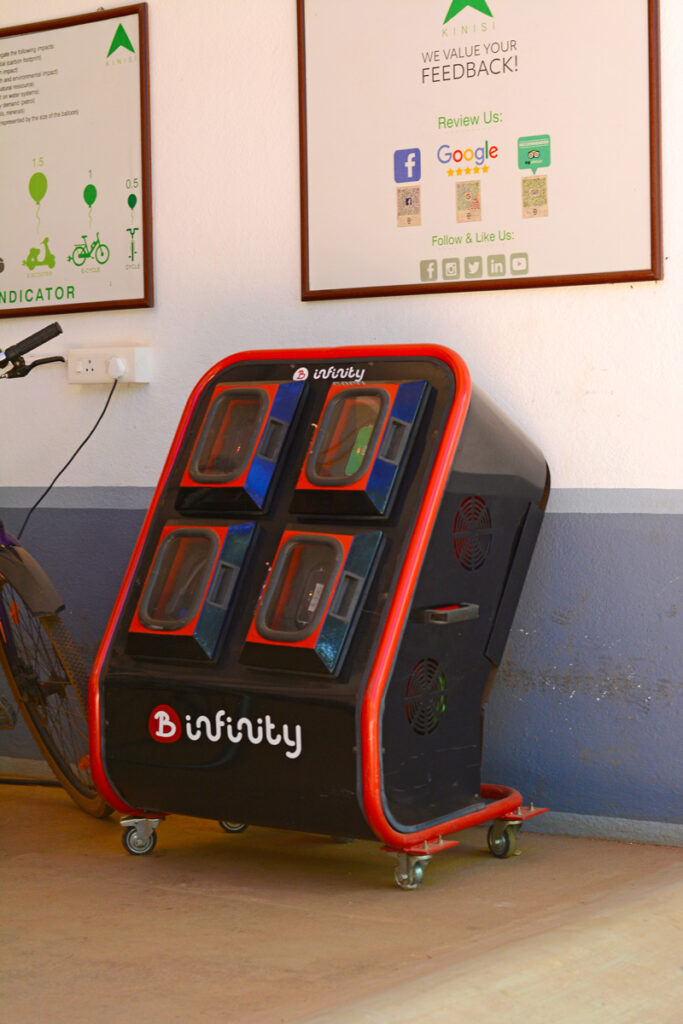
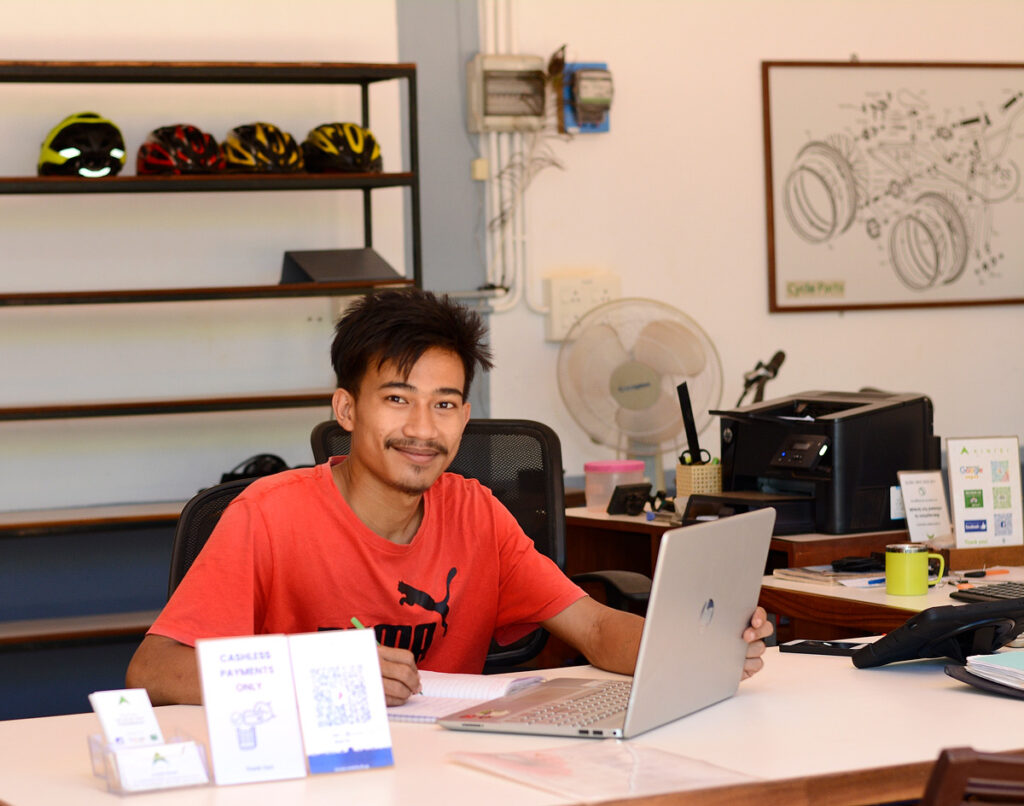
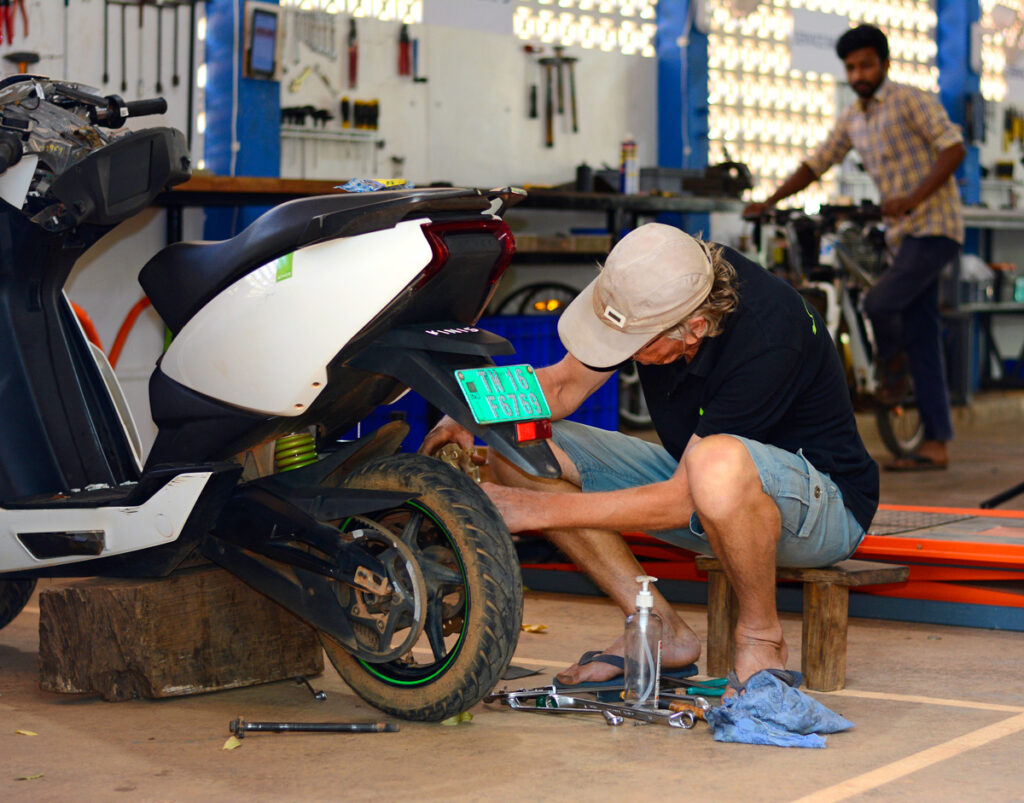
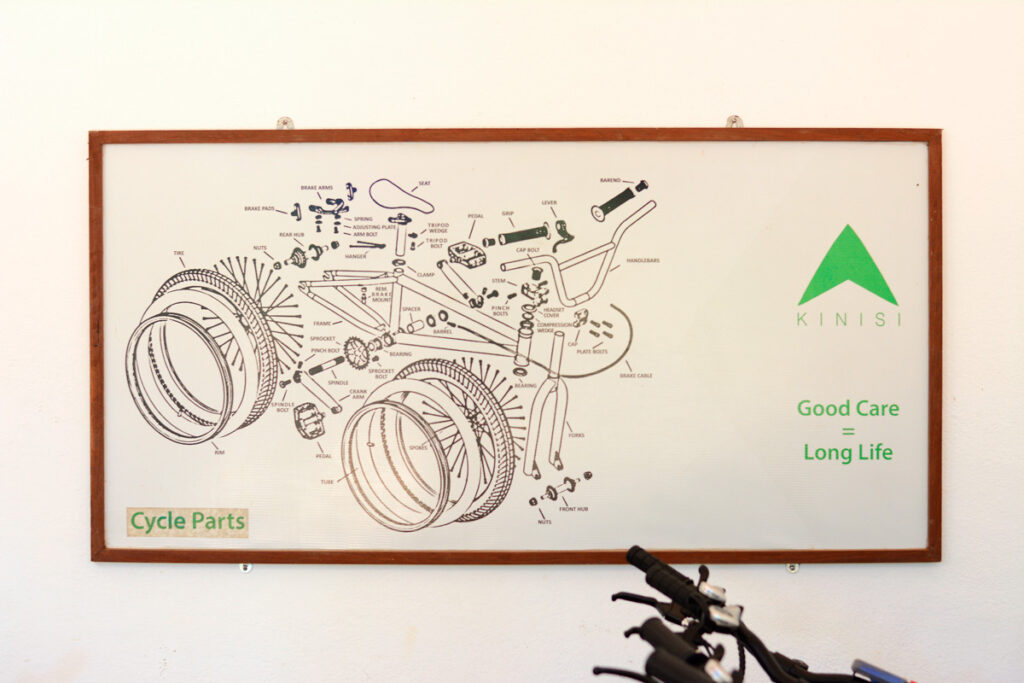

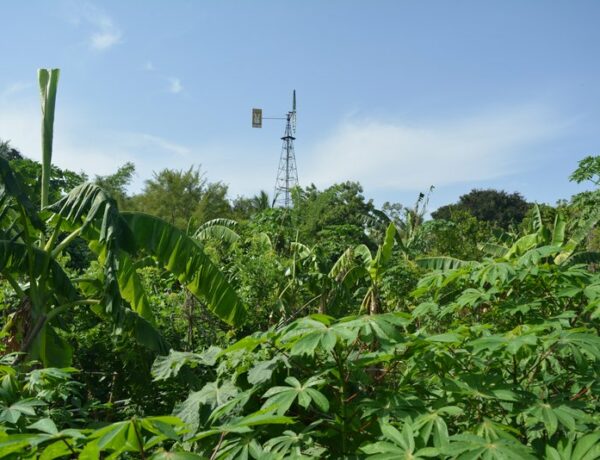



No Comments